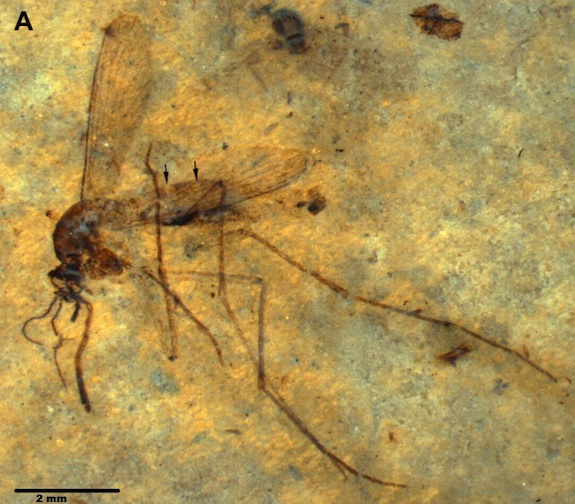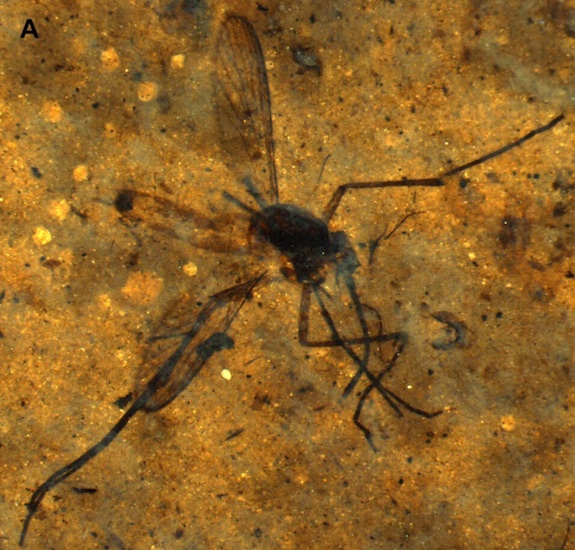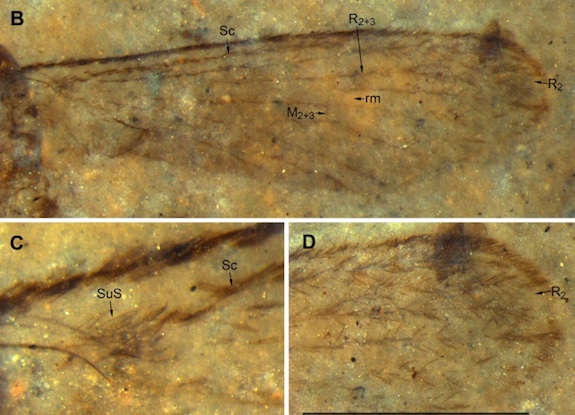Two New Prehistoric Bloodsucking Species Found in Montana
Forty-six million-year-old fossils help identify mosquito species from an ancient insect hot spot
![]()
Two new species identified recently from 46 million-year-old fossils in northwestern Montana confirm that in all their years of existence, mosquitoes have changed very little. Turns out, they’ve been sucking blood even earlier, in fact 90 million years ago, with some fossils indicating a species that had mouth parts strong enough that the tiny insects could even feed on dinosaurs.
“They have been very successful at this little niche they have where they feed on animals,” says volunteer researcher Dale Greenwalt from the Natural History Museum. “In fact, there are species of mosquitoes that sort of specialize in sucking blood from frogs and there’s always been things around, even for the last 46 million years or longer, that have blood in their veins that can act as hosts for the mosquitoes.”

A second newly described mosquito species, Culiseta lemniscata, represents some of the finds coming out of Greenwalt’s work in an ancient Montana lakebed.
For the past five summers at the Kishenehn Basin site in Montana, Greenwalt’s field research has helped produce some of the smallest fossils of insects in the world. The ancient lakebed, roughly 100 miles long, actually derives its name from a nearby creek with the Kutenai Native American word meaning “no good.” Greenwalt says it’s just the opposite. “For some reason,” he says, “in this particular site, the conditions were absolutely perfect for the finely detailed preservation of these really tiny insects.”
Fairy wasps, for example, are “so tiny that they lay their eggs inside the eggs of other insects.” Greenwalt says, “The year before last, I collaborated with a scientist in Canada who described several new species of these fairy wasps from the shale in Montana.”
Particularly unique is that these fossils have been recorded in shale, rather than amber, which is typically how small insects are best preserved. Greenwalt says you need the perfect storm of a thin layer of fine-grained sediment, lack of oxygen and speedy process to freeze the insects in time. Collaborating with experts from around the world, Greenwalt has been able to identify the only shale fossils for some insects and many represent the smallest fossil ever found for that species, from wasps to beetles.
With 35 mosquito fossils recorded from the site, Greenwalt says, “The mosquitos were unique because we have so many of them and they were so exquisitely preserved.”
Ralph Harbach from London’s Natural History Museum was able to use the fossils to describe two new species, starting first by identifying them as being from the Culiseta genus. Greenwalt says, “These are the first fossil mosquitoes ever described from that genus and he was able to identify them in part as being in the genus based on a group of tiny little hairs at the base of the wing.”
Then, he says, “you make the assumption, that given that it’s 46 million years old, it has to be a different species because we just don’t think that one single species could survive for 46 million years.” Most are estimated to live one to two million years, ten at the most, he says. But, as the fossils show, even in all that time, the changes have been few. “They’re so similar to what we have around today,” says Greenwalt. He doesn’t think the parasitic creature will be going anywhere anytime soon.
Greenwalt’s work has produced around 5,000 pieces of rock representing 14 different orders of insects, which will be organized and added to the Natural History Museum’s collections.
/https://tf-cmsv2-smithsonianmag-media.s3.amazonaws.com/accounts/headshot/Leah-Binkovitz-240.jpg)


/https://tf-cmsv2-smithsonianmag-media.s3.amazonaws.com/accounts/headshot/Leah-Binkovitz-240.jpg)